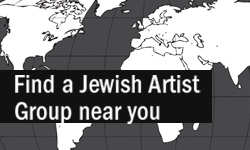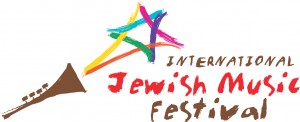Branding Jewish Culture: The Fifth Schmooze Festival
13 Jan2011
By Eszter Margit for SUDINmag | Tweet
Over two hundred Jewish presenters gathered at the City Winery in New York on January 11-12 to network and celebrate Jewish culture. One of the main discussions centered around branding Jewish culture: organizers of four successful international Jewish cultural festivals discussed their unique strategies and dilemmas. Even though festival organizers think visual representation is key, there is a growing need to connect with visual artists, who truly understand the concept of their project and are able to bring Jewish concepts to mainstream audiences.
Eric Stein, Director of the Ashkenaz Festival in Toronto said that even though visual arts had been part of the festival, it has proved to be a challenge to visually represent the maturity process his festival went through during its 15 year course. ‘We always worked with the same artist to keep a consistent look, but it doesn’t really match who we are, any more,’ he noted.
Marie-Louise Albert, artistic and managing director of Chutzpah!, the Vancouver-based international Jewish festival said, ‘Our visuals are also consistent: we always work with an artist who participates at our festival that year. We are making a conscious effort to tie the visual and the performing arts.’ Marie-Louise Albert explained that their main challenge had been finding images that are able to attract the ‘mainstream’, Canadian audience to their events. Lately, the festival outsourced its publicity, marketing and social media commissions to experts who were able to promote their events to the mainstream media.
The Kracow Jewish Culture Festival, based in Poland, was launched in 1988, right after the collapse of Socialism. Director Janusz Makuch explained, their main challenge had been visually representing a culture that was wiped out during the Holocaust, yet organizers thought it should be part of Polish mainstream culture and catch the interest of the Polish audience. Therefore festival organizers wanted to show in their imagery that international Jewish culture was still alive and relevant. Makuch said, ‘23 years ago the festival had a very different logo, forming a globe and a crown. Recently we hired an Israeli artist to design our new logo: it was a fantastic challenge because he’s never been to Krakow before, so he had no connection to the location or the local culture at all. That turned out to be a good thing, he designed the clearest and most visible logo with the Hebrew letter ‘Kuf’ – the letter K also symbolizes Krakow, ‘Kulture’ and ‘Krown’’.
Panelists agreed that since the definition of Jewish culture is so broad that sometimes the visual images representing it are so general that they don’t really carry a meaning.
Ken Gould, Director of the International Jewish Music Festival in Amsterdam explained how their 15 years old festival’s visual identity went through several stages of development. In the beginning, when they operated on a low budget, organizers had their logo designed via crowd-sourcing on an internet-based design marketplace, www.99designs.com. Even though some of the proposals looked very ‘slick’, their committee felt that a hand drawn image expressed their brand the best. The following year they employed the color scheme from the logo, but was more elaborate. The latest festival operated with a larger budget, giving the organizers the opportunity to hire a professional designer. Gould said, ‘Our recent marketing challenge had been to decide how Jewish our visual identity should look. After much debate, we have agreed upon a completely abstract, naturally inspired image – it turned out to be a huge success with our audience, leadership, donors and the media.’
Festival organizers agreed that professional visuals do not only matter to the funders, also help sell advertisement and create expectations in the audience about the quality of the performances. They warned however, that if the visuals too promising and the festival doesn’t deliver good enough content, the competition will wipe them out. Part of festivals’ future mandate should be developing visual artists through residencies during their events.
- In: News
- Tags: Europe, Graphic Design, NYC








to Branding Jewish Culture: The Fifth Schmooze Festival
Yona Verwer
January 14th, 2011 at 8:08 am
Hopefully next year the Schmooze Festival will feature visual arts. Although some art, including mine, was exhibited this time, it was only at the very last evening event. Unfortunately the space in this year’s venue did not lend itself to an art exhibit.
I invite the Schmooze organizers to contact me at the Jewish Art Salon, where we have hundreds of artists whose participation could take it to the next level. URL: http://jewishartsalon.com